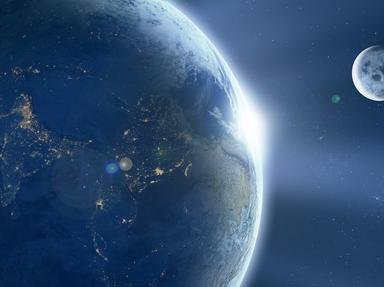Quiz Answer Key and Fun Facts
1. In what year did Galileo Galilei publish his discovery of moons orbiting Jupiter?
2. Galileo did not name the four moons after Zeus' lovers from Greek mythology. Rather, hoping to garner favour from a prospective patron, he initially called them Cosmica Sidera (or Cosimo's stars). To which family did Cosimo belong?
3. Until the 20th century, the four Galilean moons were commonly referred to as Jupiter I, II, III, and IV.
4. Named after the cupbearer of the Greek gods, which is the largest of the Galilean moons?
5. Which of the four Galilean moons, named for a priestess of the Greek goddess Hera, is the closest to Jupiter?
6. The smallest of the four Galilean moons was named after a Phoenician noblewoman whom Zeus courted. Which moon is it?
7. The three inner Galilean moons orbit in resonance with one another at a 1:2:4 ratio. Which one does not participate in this orbital resonance?
8. The largest Galilean moon (and largest moon in our solar system) is larger than the planet Mercury.
9. In 1989 NASA launched a spacecraft that was the first to go into orbit around Jupiter to observe the planet and its moons, sending back a wealth of information. What was the name of that ship?
10. A second mission to Jupiter was launched on August 5, 2011, with the intent to establish an orbit around Europa.
Source: Author
reedy
This quiz was reviewed by FunTrivia editor
rossian before going online.
Any errors found in FunTrivia content are routinely corrected through our feedback system.
